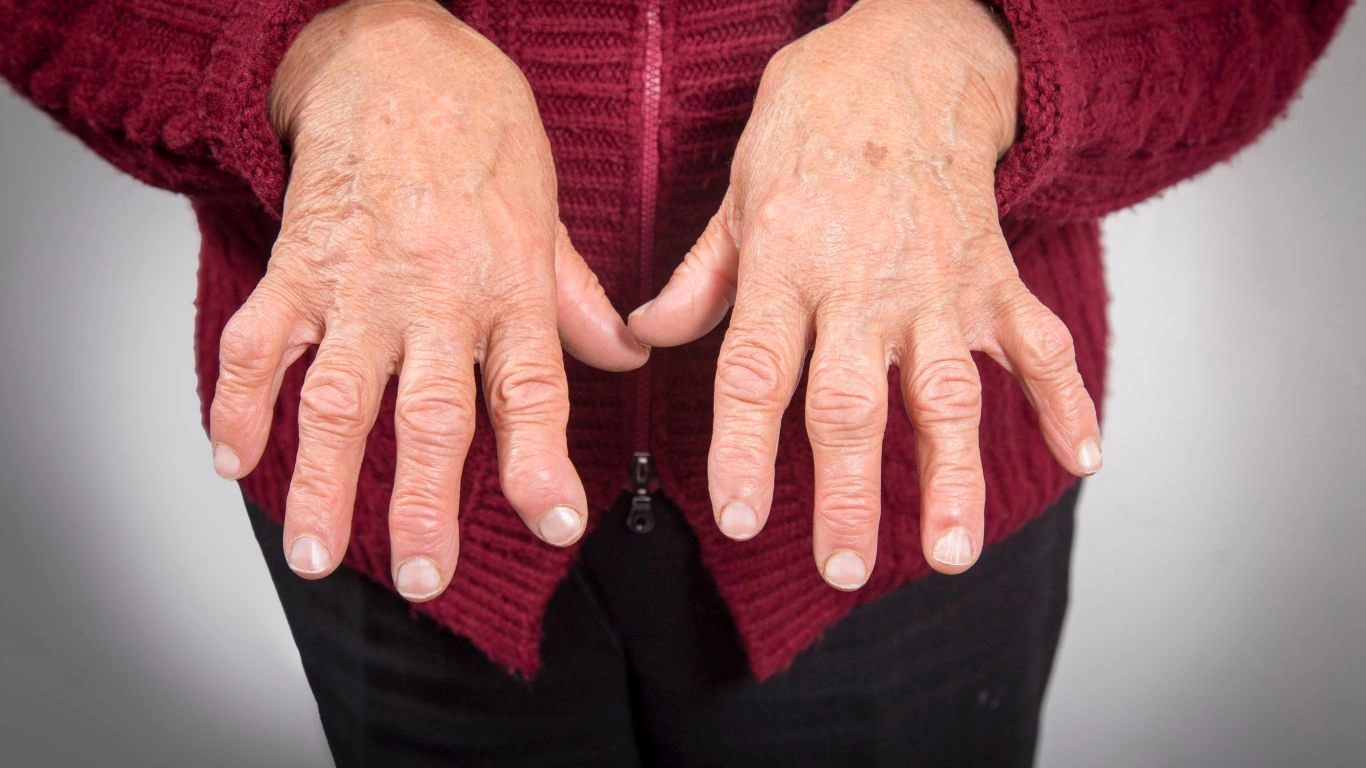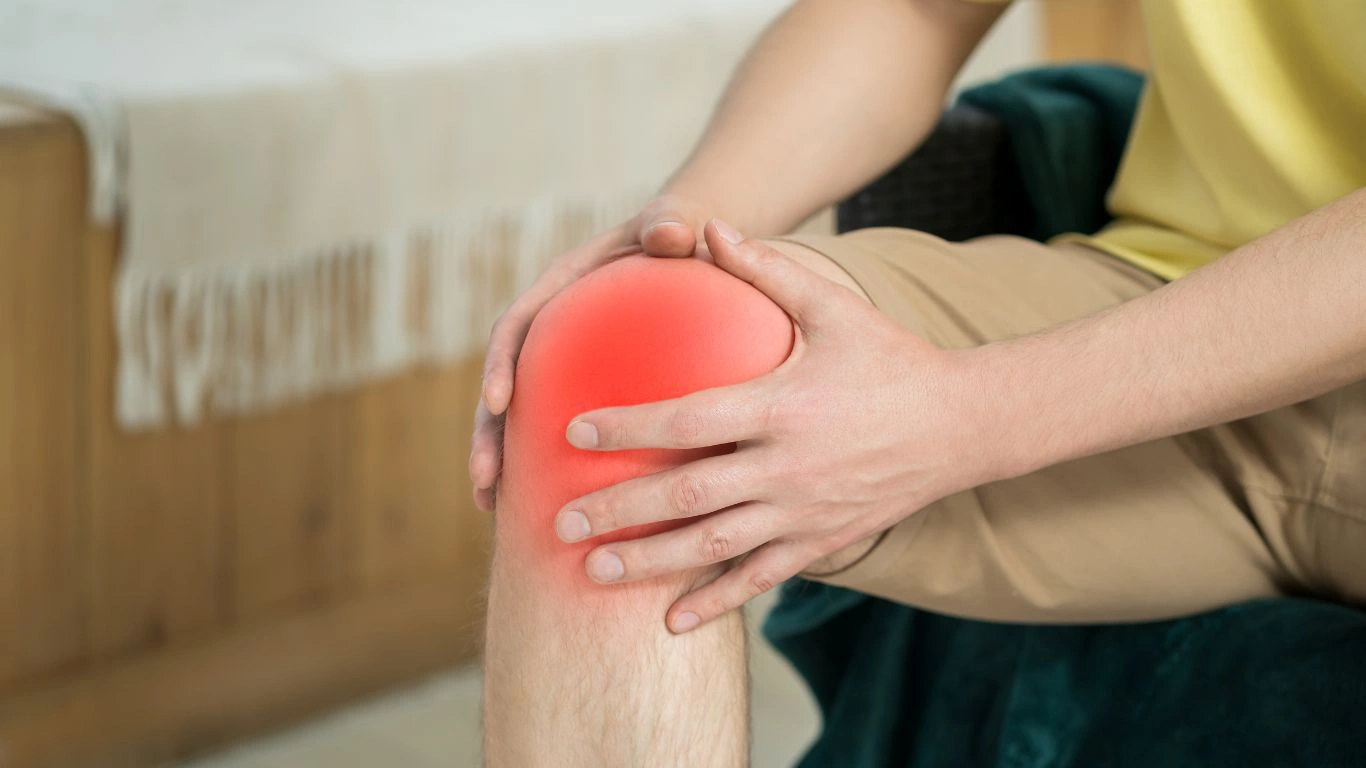Best Natural Ways to Manage Rheumatoid Arthritis Without Side Effects
Living with rheumatoid arthritis is no joke. I’ve seen it up close — the daily stiffness, the fatigue that hits out of nowhere, the quiet frustration of feeling like your own immune system has turned on you. As a Rheumatology Nurse Practitioner, I’ve spent years helping patients navigate this chronic illness, and one thing I’ve learned is this: managing rheumatoid arthritis doesn’t have to stop at conventional treatments. There’s a growing interest (and a lot of personal success stories) around blending rheumatoid arthritis and alternative medicine — and that’s exactly what we’re diving into today.
Understanding the Rheumatoid Arthritis Experience

Before we get into the juicy stuff about herbs, acupuncture, or anti-inflammatory diets, let’s set the stage. Rheumatoid arthritis (RA) is more than joint pain. It’s an autoimmune condition where your immune system mistakenly attacks the lining of your joints — think of it like friendly fire, but in your own body. The result? Swelling, pain, stiffness, and over time, permanent joint damage if untreated.
And it’s not just physical. I’ve talked with patients who feel isolated, anxious, or even depressed — and honestly, that makes sense. You wake up not knowing how bad today’s flare-up will be. That uncertainty can be exhausting. So it’s no surprise people start looking for more — something beyond prescriptions and lab work.
Why Alternative Medicine Is On the Radar

Now let me say this upfront: alternative medicine for rheumatoid arthritis isn’t about ditching your rheumatologist and living on turmeric smoothies alone. Nope, that’s not the move. But many people — my patients included — are using complementary approaches alongside their prescribed meds, and they’re seeing real results. Less pain. Better sleep. Improved energy. And maybe just as importantly: a feeling of control.
So what are we talking about when we say “alternative”? Here’s a quick list of what often comes up in my clinic:
- Acupuncture and acupressure
- Herbal therapies (like turmeric, boswellia, and ginger)
- Mind-body practices (think yoga, tai chi, meditation)
- Dietary changes, especially anti-inflammatory diets
- Supplements (omega-3s, vitamin D, probiotics)
- Massage therapy and chiropractic care
That’s a big menu. The key is finding what works for you — your body, your symptoms, your lifestyle. No one-size-fits-all magic cure here.
My Perspective From the Clinic

Let me share a quick story. One of my longtime patients, a woman in her late 40s, came to me after her second major RA flare in a year. She was already on methotrexate and had tried a couple of biologics with mixed results. But she was exhausted — emotionally and physically. We talked through her options and she asked, “What else can I do besides just more meds?”
That’s when we started exploring complementary options together. She began a gentle yoga practice twice a week. Swapped her afternoon Diet Coke habit for golden milk (yes, with turmeric). Worked with a nutritionist to cut back on sugar and processed foods. And she started acupuncture for pain management.
Was it a miracle? No. But three months in, she was having fewer flares, sleeping better, and feeling more in control of her health than she had in years. That kind of shift matters. It’s not about ditching Western medicine — it’s about expanding the toolbox.
So, Is Alternative Medicine Safe for RA?
This is the million-dollar question. And the honest answer is: it depends. Not all alternative treatments are created equal, and some can actually interfere with your prescribed meds. That’s why I always recommend looping in your healthcare team before starting anything new — especially herbal supplements, which can mess with liver enzymes or interact with medications.
But there are some approaches that are generally considered safe — and even backed by science — when used correctly. Let’s look at a few big ones next, including the ones I’ve seen patients respond well to over the years.
Red Flags to Watch For
If you’re exploring alternative options, here are a few signs to be cautious of:
- Anyone claiming a “cure” for RA — it doesn’t exist (yet).
- Supplements with no ingredient transparency.
- Practitioners who advise stopping your prescribed treatments.
- Testimonials without any clinical backing — everyone’s different.
Always, always talk to your rheumatology provider. If your alternative therapies aren’t in sync with your meds, you could end up doing more harm than good — and that’s the last thing we want.
The Bigger Picture: Holistic RA Care Is Here to Stay
The cool thing about the intersection of rheumatoid arthritis and alternative medicine is that it’s not just a trend anymore. We’re starting to see research catch up with what many patients have known all along: addressing inflammation, pain, and energy from multiple angles just makes sense.
And from my experience in the clinic, when patients feel empowered to be active participants in their own healing — whether that’s through guided meditation or an anti-inflammatory breakfast — they’re more likely to stick with treatment plans, monitor their flares, and speak up when something isn’t working. That’s huge.
Exploring Herbs and Supplements That Actually Show Promise

Let’s talk herbs and supplements — because, wow, this is a space packed with both potential and a lot of noise. In the clinic, I’ve seen patients get incredible support from natural options, but only when used wisely. The key? Looking for options backed by research and used in conjunction with — not in place of — conventional treatment.
Here are a few that come up again and again in my conversations with patients:
- Turmeric (Curcumin): Probably the most well-known, thanks to its anti-inflammatory punch. I’ve had folks swear by it for easing morning stiffness — especially when used daily over time.
- Omega-3 Fatty Acids: Found in fish oil, these are pretty widely accepted even in traditional medical circles. I’ve personally seen lab markers like CRP and ESR drop a few points after steady use.
- Boswellia: Also called Indian frankincense. Some patients notice reduced joint swelling after adding this one into their regimen. Worth looking into, especially for folks sensitive to NSAIDs.
- Ginger: I always say if your stomach can handle it, ginger’s worth a try. It’s another natural anti-inflammatory with decent clinical backing and a super long history in traditional medicine.
Again, not all supplements are created equal. Quality matters. And the dosage? That’s a conversation you should definitely have with your healthcare provider — or someone like me, who can help you navigate labels, studies, and safety.
Mind-Body Practices: Don’t Underestimate the Power of Calm

This is the part that used to get brushed off as “woo-woo” — but not anymore. The science around stress and inflammation is solid. When you’re dealing with rheumatoid arthritis, chronic stress can be gasoline on the fire. That’s why I’m a huge advocate for mind-body practices, especially ones that focus on breath, gentle movement, and mindfulness.
Some of my favorite patient-friendly options:
- Yoga: Not all yoga is created equal. I usually recommend restorative or chair yoga — something gentle that helps mobility without straining the joints.
- Tai Chi: It’s slow, intentional, and surprisingly powerful. I’ve had older patients love it for balance and flow — plus, it doubles as meditation in motion.
- Guided Meditation: Free apps or YouTube channels are a great start. Even 5–10 minutes a day can lower perceived pain levels and improve sleep quality.
- Breathwork: This one is underrated. Diaphragmatic breathing can calm the nervous system, reduce cortisol, and help during flare-ups.
One of my patients told me she feels “more herself” when she starts her day with yoga and a few deep breaths. That may sound small, but it adds up. When your mental space improves, your pain feels more manageable. That’s real progress.
Eating to Fight Inflammation

Here’s where things can get personal. Food is emotional — I totally get it. But when it comes to rheumatoid arthritis and alternative medicine strategies, anti-inflammatory eating is at the top of the list. And not just because of a fad diet — there’s legitimate science backing this stuff up.
In my clinic, we don’t go straight into “never eat this again” mode. That never works long term. Instead, I encourage small swaps and mindful choices. Here’s a simple breakdown:
Foods That May Help Calm Inflammation:
- Leafy greens (like spinach, kale, arugula)
- Berries and brightly-colored fruits (antioxidants galore)
- Fatty fish (salmon, sardines — omega-3s again!)
- Olive oil, avocado, nuts, and seeds
- Whole grains (quinoa, brown rice, oats)
- Herbs and spices (especially turmeric and ginger)
Common Inflammatory Triggers to Watch:
- Processed sugar (sorry, soda and pastries)
- Refined carbs (white bread, white rice)
- Fried foods and hydrogenated oils
- Excess alcohol
- Red or processed meats
Here’s what I usually tell my patients: don’t try to overhaul everything at once. Pick one meal — maybe breakfast — and start there. Add some chia seeds to your oatmeal. Swap butter for olive oil. Little wins add up faster than you think.
Alternative Therapies That Deserve a Closer Look
Aside from diet and supplements, there’s a whole world of hands-on therapies that might be worth exploring. Again, none of these are magic — but paired with conventional care, they can offer real, lasting relief.
- Acupuncture: I’ve had patients go from skeptical to loyal fans. Some describe it as hitting a “reset button” on their pain response.
- Massage therapy: A gentle, arthritis-informed massage can work wonders for stiff joints and mental fatigue.
- Chiropractic care: Not for everyone, but some RA patients find relief when spinal alignment reduces pressure or inflammation in nearby joints.
- Hydrotherapy: Warm water, low-impact movement, and reduced pressure on joints? Yes, please. Local pools or physical therapy centers often offer classes.
I had one patient tell me her weekly hydrotherapy sessions were the only time she felt “normal” again — no pain, just movement. That’s powerful. And empowering.
Trust, Timing, and Tuning In to Your Body
If there’s one thing I’ve learned after years in rheumatology, it’s this: healing isn’t linear. Some days are tough, and some weeks feel like breakthroughs. The best thing you can do is stay curious, keep communication open with your care team, and don’t be afraid to advocate for yourself.
Alternative medicine isn’t about abandoning what works — it’s about expanding your options. Listening to your body. Honoring your limits. And sometimes, trying something new that just might shift the balance in your favor.
Creating a Personalized Rheumatoid Arthritis Self-Care Plan

By now, you’ve probably gathered that there’s no single “right way” to manage rheumatoid arthritis with alternative medicine. What works beautifully for one person might totally flop for another — and that’s okay. The trick is building a self-care plan that makes sense for your life, your symptoms, and your comfort level.
In my experience working with patients across all walks of life, here’s the approach that seems to stick best:
Step 1: Keep a Symptom Tracker
I recommend grabbing a simple notebook or app (even a sticky note works in a pinch) and tracking a few key things daily:
- Level of joint stiffness in the morning (0–10 scale)
- Fatigue level during the day
- Pain intensity and location
- Any new supplements, foods, or alternative treatments added
This makes patterns way easier to spot. One of my patients figured out that her flare-ups were consistently worse three days after eating processed meats — something we never would’ve connected without her journal.
Step 2: Mix, Match, and Experiment Mindfully
You don’t have to try every alternative treatment under the sun — in fact, please don’t. That’s overwhelming. Instead, pick one or two options that resonate with you and introduce them slowly.
Here’s a sample progression I’ve used with patients:
- Week 1: Start an anti-inflammatory breakfast (like oats + chia + berries)
- Week 2: Add 10 minutes of daily gentle yoga or stretching
- Week 3: Begin a turmeric supplement after speaking with your provider
- Week 4: Try guided meditation 3x a week
Slow and steady lets you figure out what’s really working — and what’s not worth your time or money.
Redefining What “Wellness” Looks Like With RA

I think this is a really important mindset shift: wellness with RA isn’t about perfection. It’s not about never flaring again or bouncing out of bed like nothing ever happened. It’s about building a life that honors your body’s needs — and still makes space for joy.
For some, that might mean scaling back work hours. For others, it’s a morning walk instead of a high-intensity spin class. One of my patients told me she redefines success by asking, “Did I listen to my body today?” If the answer is yes, that’s a win.
And truthfully, that’s what alternative and complementary medicine should support: not chasing a miracle, but creating space for healing on your own terms.
Real Talk: What I Tell Every Patient About Integrative RA Care
If you were sitting across from me in the clinic right now, here’s what I’d probably say:
- Your voice matters. Speak up about what’s working and what’s not. The best outcomes come from collaboration, not just prescriptions.
- Be wary of health influencers pushing quick fixes. If it sounds too good to be true, it probably is.
- Balance is key. You don’t have to choose between traditional medicine and holistic care — there’s room for both.
- Progress is personal. Your journey won’t look like anyone else’s. That’s normal, and that’s okay.
I’ve seen so many patients thrive once they embraced that mindset. They found a rhythm, a flow — even with a chronic illness tagging along for the ride.
Final Thoughts: Trust Yourself and Your Process
Rheumatoid arthritis is a lifelong diagnosis, but it doesn’t have to mean a life without vitality. Whether you’re just starting out or have been managing symptoms for years, exploring rheumatoid arthritis and alternative medicine can open doors you never knew were available.
And remember, your body is always communicating with you. The more you tune in, the better you can respond. Whether that’s through food, herbs, breath, or simply slowing down — you’re allowed to take charge of your wellness in ways that feel right to you.
Helpful Resources & References
These are some of the places I regularly point patients to for solid, evidence-based information and practical support:
- Arthritis Foundation
- National Institutes of Health (NIH)
- National Center for Complementary and Integrative Health (NCCIH)
- Mayo Clinic
Disclaimer
This article is for educational and informational purposes only and is not intended as medical advice. Always consult with your healthcare provider before starting any new treatment, supplement, or therapy. Individual needs and responses vary, and what works for one person may not be suitable for another.

Tarra Nugroho is a dedicated Nurse Practitioner with a strong foundation in family and preventive care. She brings both compassion and clinical expertise to her practice, focusing on patient-centered care and health education. As a contributor to Healthusias.com, Tarra translates medical knowledge into clear, empowering articles on topics like women’s health, chronic disease management, and lifestyle medicine. Her mission is simple: help people feel seen, heard, and informed—both in the clinic and through the content she creates. When she’s not caring for patients, Tarra enjoys weekend hikes, plant-based cooking, and curling up with a good health podcast.






